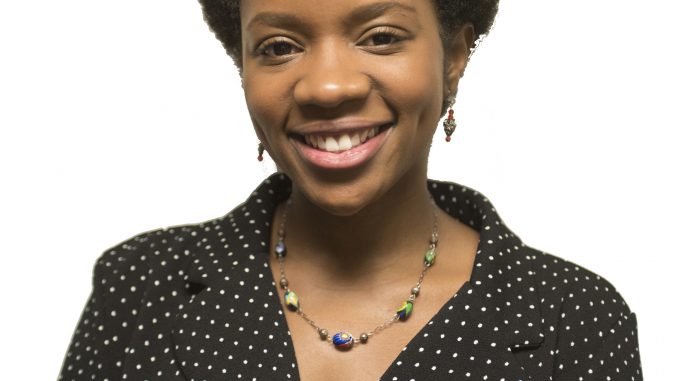
 As a Black poet, I’m excited that I can view the first edition book of poetry by Phillis Wheatley, the first African-American to have a book of poetry published, on Main Campus — at Temple’s Charles L. Blockson Afro-American Collection.
As a Black poet, I’m excited that I can view the first edition book of poetry by Phillis Wheatley, the first African-American to have a book of poetry published, on Main Campus — at Temple’s Charles L. Blockson Afro-American Collection.
The Blockson Collection, nestled in Sullivan Hall, commemorates Black history with more than 500,000 artifacts. But some students don’t even know it exists.
It is critical that students access and celebrate the history the Blockson Collection has to offer, especially in a climate where Black voices are frequently silenced, both in the Temple community and across the nation.
“There are a lot of times where this is the only space students get to learn about things like race and racism,” said Christopher Roberts, a fourth-year Ph.D. student and professor of Africology and African American studies. Roberts incorporates the Blockson Collection into the syllabi for his classes.
The Blockson Collection demonstrates that Black history is valuable and extensive, and offers students an opportunity to learn about this history firsthand.
Morrease Leftwich, a sophomore political science and African American studies major, recently visited the Blockson Collection to complete a project for Roberts’ Urban Black Politics class. Leftwich explored photographs and books, gathering information on the Great Migration and its impact on Black churches in Philadelphia.
“Black people in the South were used to a more intimate relationship with churchgoers,” Leftwich said. “It was like a family in the church. In Philadelphia after the Great Migration, you saw a lot more storefront churches because the mega-churches weren’t doing it for them.”
Although Leftwich was required to go to the Blockson Collection for this class project, he said he would visit again, “even if it wasn’t assigned.”
“If I was doing a presentation or research assignment, I could definitely use it for primary sources,” Leftwich said.
Hannah Wallace, a 2016 African American studies alumna, used to work as an assistant archivist at the Blockson Collection. She said the Blockson is valuable because it allows visitors to utilize resources on people affected by the African diaspora — descendants of African people who were dispersed across the Americas during the slave trade.
Wallace said the Blockson Collection continues to be an important part of her studies as a graduate student at University of the Arts, where she is pursuing her master’s degree in museum education.
“I actually chose to live near Temple because I wanted to continue utilizing its resources, such as the Blockson,” Wallace said.
Diane Turner, the curator of the Blockson Collection, said the decision to house such historic artifacts at Temple was very deliberate.
Charles Blockson, the founder of the collection, chose Temple because “Temple focused on diversity, and it was in North Central Philadelphia in the heart of an African-American community,” Turner said.
It is important that students acknowledge the Blockson Collection as a rewarding source of Black history and culture, because to truly appreciate Temple means to acknowledge the historical importance of its predominantly Black home in North Philadelphia.
Many artifacts in the Blockson Collection are particularly relevant to North Philadelphia, like original photographs of the late Cecil B. Moore, the namesake of the avenue on the southern border of Main Campus.
Moore, a civil rights activist and 1953 Temple Law alumnus, advocated for the Black working class. He also led protests with the Rev. Dr. Martin Luther King Jr. in 1965, advocating for the desegregation of Girard College.
“Oftentimes students don’t know who Cecil B. Moore is,” Turner said. “But if they come here, they can find out.”
In addition to learning about Moore at the Blockson Collection, students can also explore other historical information relevant to the community surrounding Temple. Through sermons, news clippings and photographs, students can learn about the legacy of Father Paul Washington, a civil rights activist and the pastor at Church of the Advocate from the early 1960s to the late 1980s. Students can also read “Boppin’ at Miss Mattie’s Place,” a dissertation by Benita Junette Brown about the dance culture in North Philadelphia during the 1960s.
But students can’t access this history if they aren’t even aware the Blockson Collection exists.
Roberts said most of his students aren’t familiar with the Blockson Collection “unless they’ve had other classes” that have required them to go there. Turner added that some students might have never found it if not for mistakenly stumbling upon the collection in Sullivan Hall.
While it’s good that students are discovering the Blockson Collection, they shouldn’t have to find it by accident. The university should better publicize the collection to encourage student attendance.
“The Blockson is important for people to attend, support and visit,” Roberts said. “It is really a space where Black people are framing and telling the stories of ourselves.”
The ties between Temple and the historically Black neighborhood in which it exists are important and lasting. The university has a valuable resource in the Blockson Collection, and it’s crucial that students are familiar with it. Learning about the history of our neighbors will only make students more informed and allow them to better understand the university’s impact on the North Philadelphia community.
Basia Wilson can be reached at basia.serafina.wilson@temple.edu.


Be the first to comment